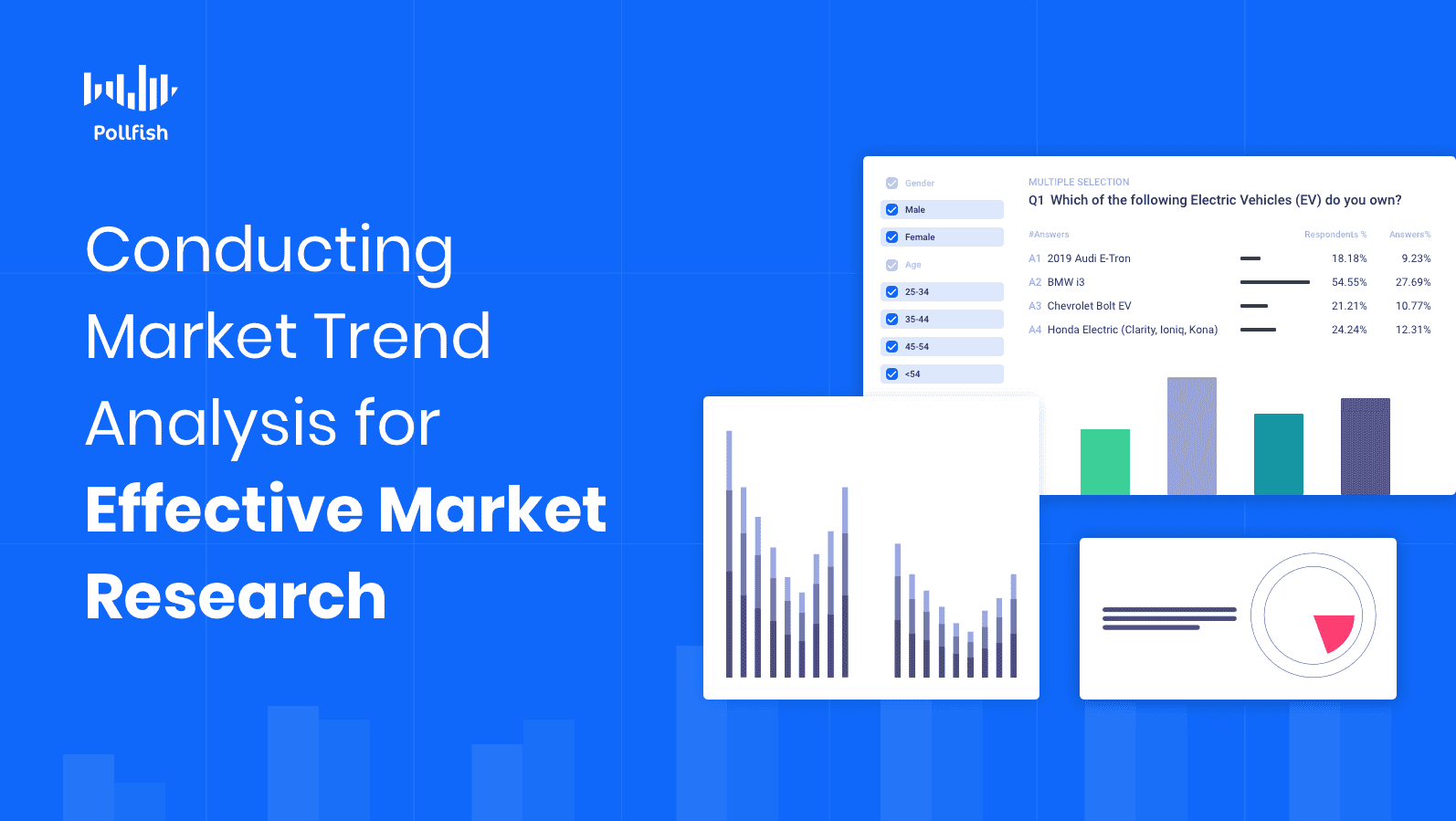How to Use Market Analysis to Identify Trends
Ellie Moore

Photo: How to Use Market Analysis to Identify Trends
In today’s rapidly changing business landscape, staying ahead of trends is crucial for success. Market analysis is an invaluable tool for identifying these trends, enabling businesses to adapt and thrive. This article explores how to effectively use market analysis to uncover trends, providing actionable insights to guide your strategic decisions.
What Is Market Analysis?
Market analysis involves researching and evaluating a market to understand its dynamics, including customer needs, competitor activities, and broader economic factors. By analyzing this data, businesses can uncover patterns that indicate emerging trends.
Whether it’s a shift in consumer behavior, advancements in technology, or regulatory changes, these trends can significantly impact industries. A thorough market analysis provides the foundation for informed decision-making and strategic planning.
Why Identifying Trends Matters
Identifying trends is more than staying updated it’s about anticipating changes before they happen. Recognizing trends allows businesses to:
- Stay Competitive: Early adopters of trends often gain a competitive advantage by positioning themselves as industry leaders.
- Meet Customer Needs: Understanding what customers want helps businesses create products or services that resonate.
- Mitigate Risks: Spotting potential disruptions early allows companies to adapt and avoid pitfalls.
Steps to Use Market Analysis for Trend Identification
1. Define Your Goals and Scope
Before diving into data, clarify the purpose of your market analysis. Are you looking to innovate your product line, improve customer satisfaction, or explore new markets? Defining your objectives will help narrow your focus, ensuring that your analysis is relevant and actionable.
2. Collect and Analyze Data
Data is the backbone of market analysis. Here’s how to gather and assess it effectively:
- Primary Data: Conduct surveys, interviews, or focus groups to gain direct insights from your target audience.
- Secondary Data: Use existing reports, industry publications, and government databases to supplement your findings.
- Competitor Analysis: Study competitors’ strategies, pricing, and customer reviews to identify gaps or emerging trends.
For instance, Google Trends can help identify search patterns, while tools like SEMrush or Statista offer detailed market insights.
3. Identify Patterns and Emerging Signals
Analyzing data involves recognizing recurring themes, behaviors, or shifts. Key techniques include:
- Trendspotting: Look for patterns in consumer preferences, such as a rise in eco-friendly products.
- SWOT Analysis: Assess your strengths, weaknesses, opportunities, and threats in the context of new trends.
- Predictive Analytics: Use AI-driven tools to forecast future trends based on historical data.
4. Monitor Industry Influencers and News
Industry influencers, trade shows, and business publications often highlight emerging trends. Platforms like LinkedIn, industry blogs, and niche forums provide valuable insights into what’s gaining traction.
5. Leverage Social Media Insights
Social media platforms offer a wealth of real-time data on customer opinions and trending topics. Tools like Hootsuite or Sprout Social can analyze hashtags, mentions, and engagement metrics, revealing what’s resonating with audiences.
Examples of Trend Identification Through Market Analysis
Case Study 1: The Rise of Plant-Based Diets
In recent years, the surge in plant-based diets is a clear example of trend identification through market analysis. Companies like Beyond Meat and Oatly capitalized on this shift by analyzing data on consumer health preferences, environmental concerns, and emerging competitors.
Case Study 2: E-Commerce Growth During the Pandemic
The COVID-19 pandemic accelerated the growth of e-commerce. Businesses that noticed this trend early through market data pivoted to online platforms, gaining a significant edge.
Challenges in Using Market Analysis to Identify Trends
While market analysis is powerful, it’s not without challenges:
- Data Overload: Sorting through vast amounts of data can be overwhelming. Focus on quality over quantity.
- Biases: Personal or organizational biases can distort interpretations. Use diverse data sources to ensure objectivity.
- Rapid Change: Markets evolve quickly. Regular analysis is essential to stay updated.
Best Practices for Effective Market Analysis
1. Combine Quantitative and Qualitative Data
While numbers provide a clear picture of trends, qualitative insights add depth. For example, understanding why consumers prefer a particular product is as important as knowing how many prefer it.
2. Regularly Update Your Analysis
Market trends aren’t static. Conduct periodic analyses to ensure your strategies remain relevant.
3. Collaborate Across Teams
Trends affect all facets of a business, from marketing to product development. Collaborative analysis ensures diverse perspectives and more comprehensive insights.
Tools and Resources for Trend Analysis
Modern tools simplify the process of market analysis. Some recommended options include:
- Google Analytics: For website traffic trends and user behavior insights.
- Statista: A hub of global market statistics.
- Social Mention: A tool for tracking social media trends.
- Nielsen: For consumer research and media analytics.
Combining these tools with traditional methods like customer surveys can provide a well-rounded perspective.
Conclusion
Market analysis is a strategic asset for identifying trends that can shape the future of your business. By collecting and analyzing data, monitoring influencers, and leveraging predictive analytics, you can stay ahead of the curve. While challenges exist, adopting best practices and using modern tools ensures your analysis is effective and actionable.
Investing time in understanding emerging trends today can pave the way for tomorrow’s success. Whether you’re an entrepreneur or a seasoned professional, mastering the art of market analysis will position you as a forward-thinking leader in your industry.
Start your market analysis journey now and turn trends into opportunities that drive growth and innovation.
Finance & Investment
View All
June 11, 2025
Finance Salary Trends Across All RolesMaster expert SEO content! Discover how to blend user-centric writing with optimization to boost rankings, drive organic traffic, and establish your brand autho...
Ellie Moore

January 14, 2025
Sustainability and Market Trends: A SynergyDiscover how sustainability is reshaping market trends and why it’s vital for businesses to adapt and thrive.
Ellie Moore

May 30, 2025
Yahooo Finance Latest NewsElevate your rankings with expert SEO content! Discover how E-E-A-T, user-centricity, and originality build trust and value for top search engine visibility.
Ellie Moore

November 29, 2025
Boat Loan Calculator for BuyersUnlock SEO success with expert content! Learn how Google's E-E-A-T framework drives rankings, builds trust, and enhances user experience.
Ellie Moore

April 5, 2025
NVIDIA Yahoo Finance Stock Deep DiveUnlock SEO success! Learn what expert content is, why E-E-A-T is crucial, and how to create high-ranking, valuable content that genuinely helps your audience.
Ellie Moore

June 30, 2025
Capital One Auto Finance Login GuideUnlock organic growth with expert SEO content. Learn how E-E-A-T, quality, and depth drive visibility and establish your brand as a trusted authority.
Ellie Moore
Insurance
View AllSecure optimal car insurance! Our guide helps policyholders & risk managers find top providers, maximize value, protect assets, and avoid overpaying.
Ellie Moore
Don't settle for basic car insurance. Get a premium quote for superior, comprehensive coverage. Protect assets & ensure financial security for policyholders & r...
Ellie Moore
Protect your paycheck with disability insurance. Learn why income protection is a must-have for financial security.
Ellie Moore
Find optimal premium car insurance quotes online. This guide helps policyholders, agents & risk managers compare rates for robust, high-value coverage.
Ellie Moore
Essential Direct Car Insurance: Your Roadmap to Unwavering Protection Are you losing valuable peace of mind and financial security due to inadequate car insuran...
Ellie Moore
Don't let vet bills break the bank. Discover top pet insurance solutions to secure your furry friend's health and your financial peace of mind.
Ellie Moore
Education
View AllShould smartphones be allowed in classrooms? Explore the pros and cons of using smartphones in education and their impact on learning.
Read MoreExplore how virtual reality is revolutionizing learning by providing immersive educational experiences. Ready to see VR in action?
Read MoreDiscover how portfolio-based assessments offer a better way to measure student progress. See how they foster creativity and critical thinking.
Read MoreIs self-directed learning the future? Learn how students can take control of their own education, boost motivation, and achieve better results.
Read MoreProviding education in conflict zones is a major challenge. Learn about the barriers and efforts to ensure learning continuity in crisis situations.
Read MoreSocial skills training is key for kids with autism. Learn practical strategies to improve social interaction and communication in children with ASD.
Read MorePopular Post 🔥
View All
1
2
3
4
5
6
7
8
9
10
Health






Automotive
View All
August 10, 2025
Rick Case Automotive Group Service Highlights
Rick Case Automotive Group redefines vehicle service. Unmatched expertise, customer focus, and value ensure your car gets the best care.

August 30, 2025
Thornton Automotive Experts In Your Area
Find trusted auto repair in Thornton! Learn what defines top-tier automotive experts, from local knowledge to certifications, for peace of mind on the road.

July 10, 2025
Best Automotive Upholstery Shops Near Me Today
Expert guide: Find the best automotive upholstery shops near you. Restore your car's interior for ultimate comfort, enhanced value, and lasting protection.

July 30, 2025
Automotive AC Service Near Me For Cool Drives
Ensure cool, comfortable drives! This guide covers car AC service, common issues, and finding reliable repair to keep your vehicle's AC running perfectly.

August 14, 2025
Are Brunt Boots Good For Automotive Work
Considering Brunt Boots for auto work? Discover if they meet the safety & comfort demands of mechanics, including EH, slip & toe protection.

August 27, 2025
Premium Automotive Services For High End Cars
Luxury & exotic cars demand premium care. Discover why specialized services are essential to preserve their performance, stunning aesthetics, and long-term valu...
















